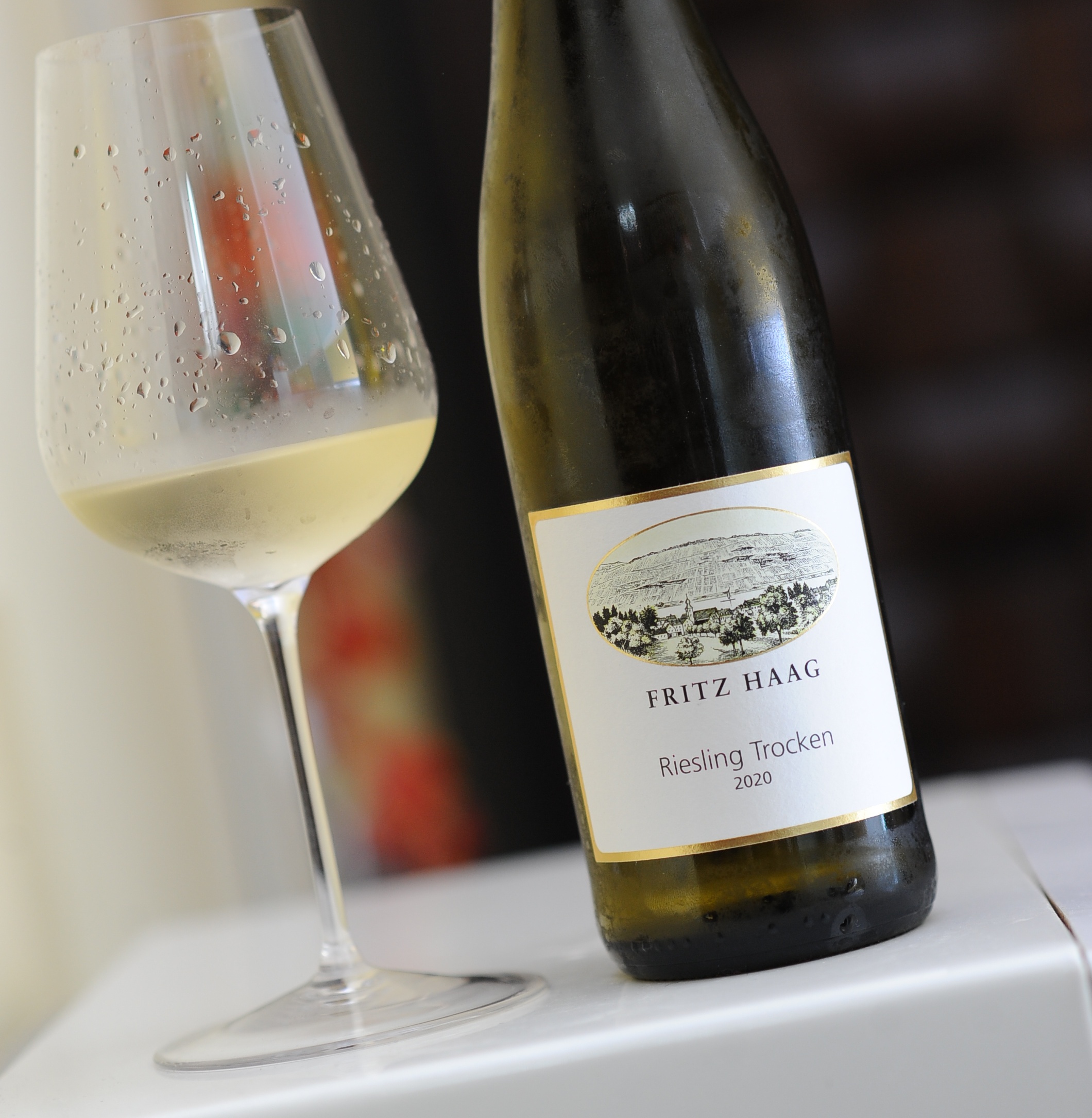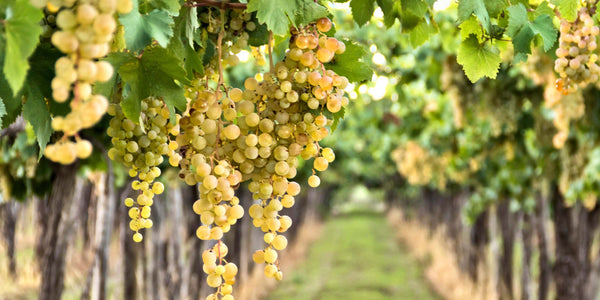Dry vs Sweet Riesling: How to Tell the Difference and Find Your Perfect Bottle
Aug 16, 2025

Last time, we explored the 5 Best Rieslings to Try This Summer 2025, now, let’s dive into one of the most common questions about this versatile grape: What’s the difference between dry and sweet Riesling?
Riesling is among the most versatile grapes in the wine world, able to create a range from refreshing, dry bottles to rich, sweet dessert wines. But what really sets apart dry Riesling from sweet Riesling? And how can you select the perfect style for your taste or your upcoming meal?
In the following sections, we'll clarify the sweetness range of Riesling, highlight label indicators, flavor profiles, and useful pairing suggestions. Whether you’re a wine connoisseur or just starting to explore aromatic whites, you’ll learn how to confidently explore the realm of Riesling.
- 1. Understanding the Sweetness Spectrum
- 2. How Dry and Sweet Riesling Differ
- 3. Identifying Sweetness on the Label
- 4. Food Pairings: Play to Each Style's Strengths
- 5. Aging Potential and Complexity
- 6. A Summary Table For You: Dry vs Sweet Riesling
- 7. Final Reflections: Discovering Your Riesling Preference
- 8. References
Understanding the Sweetness Spectrum
Riesling is well-known for its sweetness, a reputation it has rightfully earned. However, most Rieslings made today are actually dry or off-dry. The natural acidity of the grape helps to balance the sugar, leading to wines that exhibit exceptional freshness and complexity in various styles.
The sweetness level in Riesling is mainly influenced by two factors:
- Residual Sugar: This refers to the natural sugar from the grapes that remains after fermentation. A higher amount of residual sugar results in a sweeter wine.
- Fermentation Choices: Winemakers have the option to stop fermentation early to retain more sugar, resulting in sweeter wines, or let it complete for a drier finish.
Key Label Terms:
- Dry Riesling: This is marked as "Trocken" (the German word for dry) and contains very little residual sugar.
- Off-dry: Known as "Halbtrocken" (meaning half dry), these wines are slightly sweet but not overwhelming.
- Sweet Styles: Terms like Kabinett, Spätlese, Auslese, and Beerenauslese signify increasing levels of natural sweetness, which depend on the timing of the harvest and the techniques used in winemaking.
How Dry and Sweet Riesling Differ
Dry Riesling
- Flavor Profile: Bright, zesty acidity with hints of green apple, lime, grapefruit, and delicate floral notes. Very little sweetness.
- Mouthfeel: Crisp, refreshing, and often characterized by mineral qualities.
- Alcohol Content: Generally on the higher side, around 12–14% ABV. More grape sugar is converted into alcohol, resulting in a drier flavor.
- Best Regions: Germany (Mosel, Rheingau), Alsace (France), and Eden Valleys.
Tasting Tip: Dry Rieslings shine in showcasing the purity of fruit and terroir—imagine steely minerality, vibrant citrus, and pinpoint precision.
Sweet Riesling
- Flavor Profile: Rich and juicy, featuring flavors of ripe peach, honey, apricot, pineapple, and occasionally notes from botrytized grapes (noble rot).
- Mouthfeel: Rich, luxurious, and silky, sometimes exhibiting a noticeable viscosity.
- Alcohol Content: Typically lower, around 8–10% ABV. Some grape sugar remains unfermented, enhancing the sweetness.
- Best Styles: Kabinett (lightly sweet), Spätlese (richer, late-harvest), Auslese, Beerenauslese, Trockenbeerenauslese (intensely sweet and rare dessert wines).
Tasting Tip: Sweet Rieslings harmonize sugar with lively acidity, creating wines that are never overly sweet but always refreshingly vibrant.
Identifying Sweetness on the Label
Deciding between dry and sweet Riesling can be quite daunting, particularly with European wine labels. Here’s a handy tip: Look at the ABV. Wines with an ABV over 11% are typically dry. If the alcohol content is between 8% and 10%, it indicates the presence of residual sugar, making the wine sweeter.
- 12–14% ABV: Dry Riesling
- 8–12% ABV: Sweet Riesling
German wines labelling

- Trocken (dry)
- Halbtrocken (off-dry)
- Kabinett, Spätlese, Auslese, Beerenauslese (increasing sweetness)
Food Pairings: Play to Each Style's Strengths
Dry Riesling
- Pair with: Sushi, sashimi, shellfish, oysters, grilled chicken, fresh salads, vegetarian dishes.
- Why: High acidity and minerality cut through rich, fatty, or delicately flavored foods, refreshing the palate with every sip.
Sweet Riesling
- Pair with: Spicy Asian cuisine (Thai curry, Szechuan pork), Indian dishes, blue cheese, fruity desserts, or simply as dessert itself.
- Why: Residual sugar balances spicy, salty, or bold flavors—sweet and heat are a natural match.
Aging Potential and Complexity
Both dry and sweet Rieslings can age spectacularly:
- Dry Rieslings mature up to 15 years, developing nuanced petrol and herbal notes.
- Sweet Rieslings can last for decades, deepening in honeyed, marmalade-like richness and extraordinary complexity.
A Summary Table For You: Dry vs Sweet Riesling
| Feature | Dry Riesling | Sweet Riesling |
| Alcohol Content | Minimal | High (residual sugar) |
| Sugar Content | Around 12–14% ABV | 8–12% ABV |
| Flavors | Citrus, apple, mineral, beeswax, petrol | Peach, honey, apricot, jasmine |
| Pairings | Seafood, salads | Spicy, desserts |
| Aging Potential | 5 - 15 years | 10 - 30+ years |
| Label | Trocken, Dry | Kabinett, Spätlese, Auslese |
Final Reflections: Discovering Your Riesling Preference
Riesling’s incredible adaptability ensures there’s a bottle for every palate—be it refreshingly crisp whites or luxurious, sweet delights. Use label hints, ABV, and pairing suggestions to steer your choice, and don’t hesitate to venture out of your comfort zone. Each bottle offers a distinct aromatic experience.
Whether you’re enjoying the flavors of summer with a dry Riesling or treating yourself to spicy dishes with a sweet variant, grasping these distinctions enables every wine enthusiast to find the style that perfectly matches their preferences.
You can also visit our Riesling collection below











